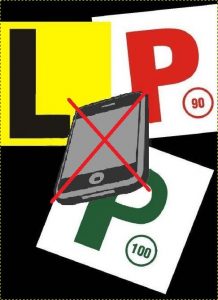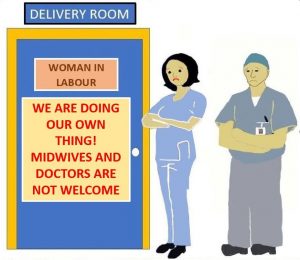 On December 1st 2016 driving rules in NSW changed for learner, P1 and P2 licence holders. Learner, P1 and P2 licence holders are now not permitted to use a mobile phone at all while driving. “These laws encourage learner and provisional drivers and riders to concentrate on developing their vehicle control and hazard-perception skills. Mobile phone use can distract novice drivers and riders from the driving task”.
On December 1st 2016 driving rules in NSW changed for learner, P1 and P2 licence holders. Learner, P1 and P2 licence holders are now not permitted to use a mobile phone at all while driving. “These laws encourage learner and provisional drivers and riders to concentrate on developing their vehicle control and hazard-perception skills. Mobile phone use can distract novice drivers and riders from the driving task”.
In an excellent online article titled ‘Teenagers & Cars: A Deadly Combination’ Chris Hudson reports: Some statistics to consider:
- Car accidents are responsible for over 60% of deaths among Australian 17-20-year-olds.
- 40% of people who die on Australian road are under the age of 25.
- A 16-year-old driver is 20 times more likely to have a motor vehicle crash than any other licensed driver.
- Alcohol consumption is involved in nearly 25% of teenage road accident fatalities
 Hudson states: ‘There are definite known risk factors that contribute to the high rate of death and injury amongst young drivers.’ In his list he includes:
Hudson states: ‘There are definite known risk factors that contribute to the high rate of death and injury amongst young drivers.’ In his list he includes:
- The number of passengers. The more passengers the greater the fatality risk.
- ‘Easily distracted teenagers can be very easily distracted. Even more so when placed in a moving vehicle equipped with radio, cd/mp3 player, air conditioner, friends to talk to, and probably a mobile phone nearby’.
- Still developing an adolescent brain. “The teenage brain is half-developed, it can function well while calm, but lacks the ability to make good decisions when overloaded by stimuli. It is still likely to revert back to emotional decision-making when conditions are not ideal.”
- Lack of experience. ‘Less experienced drivers are less able to detect and respond to traffic hazards or control of their vehicle when the situation changes rapidly. The Centers For Disease Control in the USA found teenagers are more likely than older drivers to underestimate dangerous situations, to not recognize hazardous situations, to speed, and to allow a shorter gap to the car in front.’
I suspect the attitudes of some young drivers has been considerably influenced by their watching too many car speeding scenes in movies, TV shows and video clips, interaction in too many car speeding video games and the like. A young driver has been looking forward to getting a driver’s licence and when it happens sadly a minority have all the confidence and attitude of being the ‘king of the road’ and I am invincible. But what that minority is unlikely to admit is they are novices and lack experience, and the ability to make good judgements in all situations.
I can see similarities between the attitudes of a minority of young drivers to driving and that of a minority of pregnant women, especially first-time pregnant women, to childbirth.
Sometimes a first-time pregnant patient will tell me how she has thought about what it will be like to be pregnant, to have a baby and to be a mum from when she was very young. Little girls play with dolls and pretend they are real and they are their mummies. Little girls see and help their mothers look after other siblings. As they grow up they talk about pregnancy and childbirth amongst themselves, they read magazines, watch movies, TV shows and videos on pregnancy and childbirth, etc. When pregnant, they are excited as their ‘dream’ is becoming a reality.
Just as young drivers can get driving ideas and advice from other young drivers, the media and online forums, a pregnant woman in her first pregnancy can get ideas and advice from other pregnant women, mothers, the media, and the internet including online forums. Too often a mother regards herself as an authority about pregnancy and childbirth matters because she has had a baby and freely gives her advice and views to the first-time pregnant woman and with such outspoken confidence that the comments ‘must be correct’.
Just as inexperience with overconfidence and poor judgement can result in disastrous consequences for a young driver, inexperience with narrow-mindedness and overconfidence can result in disastrous childbirth consequences for a pregnant woman and her baby.
What circumstances a young driver will encounter on the road is unpredictable. How they respond to adverse developments when driving will determine the outcome. There can be unexpected adverse developments in childbirth. How the labouring woman responds in such situations and whether she takes the advice of experienced midwifery and obstetric medical staff supporting her in labour when there are adverse developments will determine the outcome.
 A small minority of pregnant women have the view hospital employed midwives and doctors and obstetricians’ advice and actions are inappropriate and detract from childbirth being a natural, normal physiological function for women. Sadly, being a natural, normal physiological function for women does not guarantee a good outcome will always occur. I have seen, when visiting Ethiopia multiple times as a Director of Hamlin Fistula Australia, the horrific consequences of this natural, normal physiological female function of childbirth when there is no support from qualified midwives and doctors.
A small minority of pregnant women have the view hospital employed midwives and doctors and obstetricians’ advice and actions are inappropriate and detract from childbirth being a natural, normal physiological function for women. Sadly, being a natural, normal physiological function for women does not guarantee a good outcome will always occur. I have seen, when visiting Ethiopia multiple times as a Director of Hamlin Fistula Australia, the horrific consequences of this natural, normal physiological female function of childbirth when there is no support from qualified midwives and doctors.
It is a bit like the young driver completely ignoring the risks and consequences of adverse behaviour when driving. They would have heard about them but do not accept they will happen to them. Similarly, a small minority of pregnant woman who will have heard about tragic pregnancy outcomes but can have the naive belief ‘that sort of thing will never happen to me’ and behave and plan their childbirth event ignoring the reality and unpredictability of the possible adverse developments of labour and delivery.
Over the years, I have been told of all sorts of adverse childbirth outcomes that have occurred as a direct consequence a labouring woman having an inflexible narrow-minded attitude to childbirth and a determination about how her childbirth experience is going to play out.
When circumstances in her labour adversely change such a person lacks the experience, wisdom, and discernment to see the consequences that are likely to unfold and sadly so often lacks the ability to trust the advice of professional staff looking after her to make the correct decision. Sometimes there is a support person in the delivery room ‘who is in charge’ unofficially and whose advice the labouring woman heeds even though this support person is officially unqualified, inexperienced and has no background to give the right advice when there are adverse developments.
Avoidable adverse outcomes that I know of include maternal morbidity and mortality, newborn morbidity and mortality. Refusal to allow appropriate management of foetal distress in labour has resulted in ‘brain damage’ of the baby and newborn death. Fourth degree tearing has occurred because of patient refusal to allow an episiotomy when bad tearing was considered likely, massive postpartum haemorrhage causing permanent organ damage has occurred because a home birth midwife did not recognise the gravity of the amount of haemorrhage and seek appropriate medical attention in time, uterine rupture has occurred when a patient refused to heed professional advice when advised that an attempt at a VBAC was contraindicated. I can go on.
Fortunately, none of these were my patients. I have been blessed to have wonderful patients who I believe appreciate the support and care I provide. They know I have their and their baby’s wellbeing and best interests at heart. When there are adverse developments in labour I can work with my patients to do whatever is necessary to help facilitate a good outcome.
In these circumstances, the childbirth experience is not what was planned and hoped for, but one that was necessary because of the unexpected adverse circumstances to ensure a good outcome for mother and baby.
Sometimes a patent will ask: “Should I have a ‘birth plan’?” I smile. It is my observation, and that of midwives to whom I have spoken, that birth plans do not work. A rigid birth plan sets a pregnant woman up for disappointment when it does not come together as she planned. That is because what will happen during her labour and childbirth are TOTALLY unpredictable. A birth plan assumes that what a woman can know before the onset of labour is what will happen. Some pregnant women look on it like they would when planning their wedding. But just as with weddings sometimes plans do not work out, so it is with labour and childbirth.
I enjoy discussing with my patients during their antenatal visits their hopes, fears and expectations and requests for labour and childbirth and I enjoy supporting them in achieving their preferences. Hopefully, their wishes come to fruition. But my patients are not so rigid that the pathway they hope for antenatally is the one that must happen. Some qualify their ‘birth plan’ with the comment ‘whatever is necessary and advised by my doctor’. Very sensible.

